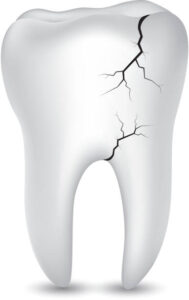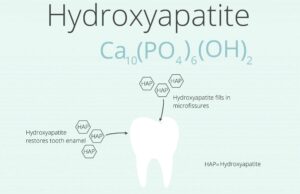When to remove? | Home remedies | Peppermint | Cold and heat therapy | Removal process | Common complications | Dos and dont’s | Conclusion
If you are in your late teen or early twenties you might be experiencing wisdom teeth pain in the back of your gums. This could be due to the emergence of the third molars, the wisdom teeth, on each corner. If there is enough room in the mouth for the remaining four of the 32 teeth, you won’t feel much discomfort, but if space is limited, your wisdom teeth might grow at an angle or get stuck. The impacted wisdom teeth could cause gums inflammation, leading to bleeding from the affected area and excruciating tooth pain and headache.
In most cases, inflammation subsides in a few days with home remedies but if the wisdom teeth pain is intense and recurs after a few days, you should book an appointment with your dentist. Following primary examination, your dentist will tell you whether wisdom teeth need to be removed or not.
When should wisdom teeth be removed?
The popular name of the thirds molars, the wisdom teeth, sounds perfect but unfortunately, these are vestigial organs, meaning no functional role in the human body. The majority of people don’t need to get wisdom teeth removed, even if they are impacted but causing any serious problems. The problem starts when the wisdom tooth gets stuck, meaning it fails to break through the surface of the gum, causing inflammation and pain. Food particle and bacteria get trapped around the wisdom teeth, resulting in plaque build-up, which in turn could lead to:
- Tooth decay
- Gingivitis
- Periodontal diseases
- Plaque induced soft tissue degeneration
- Bacterial infection in the cheek, throat, or tongue called cellulitis
- Pus (abscess) in and around the affected area
- Fluid-filled swelling and cysts formation
Fortunately, bacterial infections can be easily treated using suitable antibiotics and antiseptic mouthwash, and of course home remedies. But inflammation persists and pain becomes unbearable, you should consult your dentist to seek advice regarding wisdom teeth removal.
9 Home remedies for wisdom teeth pain relief
Early or late, wisdom teeth will emerge to test your wisdom and this test is going to be of long duration as wisdom teeth take up to 90 days to fully emerge. And during this period, you have to endure the pain, at least, until you get it removed by a dental professional. Here are some of the tips to help you manage wisdom teeth pain so that you could smile with confidence:
1. Peppermint: Soak a cotton ball in peppermint extract and apply it to the affected area. It will soothe pain and control inflammation. You can rub the oil directly on gums or rinse your mouth using peppermint tea.
2. Clove oil: It is known for its analgesic property, so you can use clove oil for wisdom teeth pain relief. Since it helps in fighting harmful bacteria, you can use it regularly to keep your mouth infection-free.
3. Alcohol: Distilled liquor is an effective disinfectant, so you can rub strong liquor onto the area affected by wisdom teeth. It dulls pain receptors, so it will ease your pain temporarily.
4. Aloe Vera: It is known for its healing property, so you can apply pure aloe vera gel on the gums to boost the repairing of the affected tissues. It will reduce inflammation, so you can use it to keep pain in control.
5. Tea tree oil: It is another highly potent antibacterial agent. Experts recommend applying diluted tea tree oil on inflamed gums. Make sure to spit out any residue as swallowing it could cause discomfort.
6. Crushed garlic and ginger: Garlic is known for its effectiveness against pathogens. You can rub affected gums with a paste of crushed garlic and ginger to control inflammation and pain. Rinse mouth thoroughly with normal water to get rid of the sulfurous smell.
7. Aspirin: The popular headache reliever is highly effective in controlling pain induced by impacted wisdom teeth as well. Over-dose of aspirin can cause cardiovascular conditions, so avoid using it continuously.
8. Menthol: This natural analgesic is known for its cooling effect. You can use it to manage pain induced by the emerging wisdom teeth. You can dilute the menthol oil and apply it to the affected area directly.
9. Cold and heat therapy: If the wisdom tooth pain is acute, you can use heat-cold therapy as the alternating temperature of the affected area increases blood flow thus boosting the relieving effect. An ice pack is effective in controlling inflammation, so apply it to your cheek to control pain.
10. Saltwater rinse: Oral care experts recommend rinsing gums with lukewarm water dissolved with common salt (NaCl). It is highly effective in controlling bacteria in the mouth, so it will help in controlling the inflammation caused by impacted wisdom teeth.
Your home is full of natural resources that could help you manage wisdom teeth pain, so use your wisdom to choose the right agents in the right proportion to control inflammation and pain. Some highly effective natural resources to control pain and inflammation are wheatgrass, oregano oil, thyme essential oil, capsaicin, and lavender essential oil.
How Wisdom Teeth Are Removed?
Most people manage wisdom teeth-induced pain and inflammation using remedies available at home. But home remedies might not help for long if your wisdom teeth are impacted, the tooth is coming at the wrong angle, there isn’t enough space in the jawbone to accommodate additional teeth. Your dentist will examine your dental system using x-rays and suggest removal if required. Your dentist will explain in detail the wisdom teeth removal procedure and possible complications. Before you sign the consent form, as the procedure involves administration of anesthesia and surgery, you should know about the procedure.
In most cases, your dental surgeon will administer a local anesthesia injection to numb the area. To help you manage anxiety and relax during the procedure your doctor may administer nitrous oxide sedation via the nasal passage.
In just a few minutes the feeling of panic and sense of pain will go away, so you will not feel anything except some pressure just before the tooth is removed. This is done to get a better hold of the tooth using a suitable device, as a better grip ensures easy removal. If your wisdom tooth is impacted, then your dentist may have to make a small cut in the gum or bone to remove the tooth. If required, your dentist might cut the wisdom tooth into small pieces to remove it without a deep incision.
Removal of a wisdom tooth usually takes less than 30 minutes, but it could be longer if the dental system is complicated. If there is an incision, your dentist will stitch the wound using dissolvable stitches. Swelling inside and outside the mouth is normal after the wisdom teeth removal, which takes almost 2 weeks to heal. Your dentist will prescribe medications to control inflammation and pain and suggest preventive measures to make recovery painless and faster.
What is the most common complication following a tooth extraction?
Just like any surgery, removing wisdom teeth also has its own risks and possible complications. However, the list of possible complications is relatively short as compared to other surgeries. Besides procedural mistakes and sedative administration, most complications are related to infection and delayed healing. You can reduce the chance of infection by following oral hygiene guidelines and preventive measures to make your recovery journey painless. Some complications, although rare, related to wisdom tooth removal are:
Dry Socket: Tooth removal creates a hole, called a socket, in the jawbone, where blood clots to help in healing. If blood clots get dislodged, it could trigger a dull, aching sensation in your gums along with the bad breath. Just follow after-care instructions to avoid dry socket formation.
Nerve Damage: If the wisdom tooth root is too deep, extracting it with excessive force could damage nerves. Although it is temporary, it can cause a numb sensation in the lower lip, chin, teeth, gums, and lower lips.
Do and don’ts after wisdom teeth removal
Your dentist will administer anesthesia for the wisdom teeth removal procedure. Regaining alertness will depend on the type of anesthesia administered. If it is local anesthesia, you will remain conscious and regain alertness in just a few minutes and restart your regular activities. But with general anesthesia, you have to wait for a few hours until you regain control of your reflexes.
You won’t feel any pain during the tooth extraction procedure, but once the sedative effect subsides, you might feel a little pain in the affected area. Your dentist will prescribe suitable painkillers to manage pain. Swelling will persist for 3-4 days, but complete healing might take 2-3 weeks. Here are some dos and don’ts to make the recovery journey painless:
Dos:
- To control swelling you can use an ice pack on your face
- To soothe sore jaws you can use moist heat
- Maintain regular mouth movement, albeit gently, to boost the flow of blood
- Eat soft foods like soup, rice, etc.
- Drink as much water as you can to maintain fluid balance
- Clean your teeth using a soft-bristled brush from the second day of surgery, but avoid the affected area.
- Continue taking medication as prescribed by the dentist
Don’ts
- Avoid doing anything, like drink through a straw, which could dislodge blood clots.
- Avoid rinsing aggressively
- Don’t eat anything crunchy, sticky, or hard
- Quit smoking, at least, during the healing phase
Final words
Wisdom teeth usually take up to 90 days to fully emerge from the gum. In some cases wisdom teeth may remain hidden under the gum line for longer, thus making gums weaker and prone to bacterial infection. You should continue with your home remedies to control inflammation and pain. If the pain persists for long, you should consult your dentists so that he could examine in detail using X-rays and recommend removal of wisdom teeth. Removing wisdom teeth is pretty normal, as it has no functional role. Just prepare your mind for a week-long recovery and let your dentist do the rest for you.
Sources:
- Weil, Kiaran, et al (2007). “Paracetamol for pain relief after surgical removal of lower wisdom teeth.”
https://www.cochranelibrary.com/cdsr/doi/10.1002/14651858.CD004487.pub2/abstract - Kitade, Toshikatsu, and Hideaki Ohyahu (2000). “Analgesic effects of acupuncuture on pain after mandibular wisdom tooth extraction.”
https://www.ingentaconnect.com/content/cog/aetr/2000/00000025/00000002/art00004 - Mettes, Theodorus Dirk G., et al (2012). “Surgical removal versus retention for the management of asymptomatic impacted wisdom teeth.”
https://www.cochranelibrary.com/cdsr/doi/10.1002/14651858.CD003879.pub3/abstract - Pruskowski, Jennifer, et al (2019). “Managing Acute Pain and Opioid Risks Following Wisdom Teeth Extraction: An Illustrative Case.”
https://www.mededportal.org/doi/abs/10.15766/mep_2374-8265.10855 - Mettes, Dirk TG, et al (2005). “Interventions for treating asymptomatic impacted wisdom teeth in adolescents and adults.”
https://www.cochranelibrary.com/cdsr/doi/10.1002/14651858.CD003879.pub2/abstract


